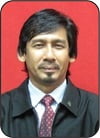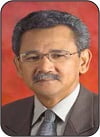A Survey on English Language Teaching in Nagoya Elementary Schools, Japan
Abstract
ABSTRACT: In Japan, the Ministry of Education, Culture, Sports, Science, and Technology has announced the teaching of EFL (English as a Foreign Language) as a compulsory subject for lower age in 2008. To investigate the flexibility for schools and teachers to design their own curriculum in the teaching of EFL in Japan, this study aimed at identifying: (1) the provision of support, resources, training, and time allocation; and (2) the instructional practices employed to the Elementary Schools students in Nagoya, Japan. Instruments in this study are semi-structured interview, classroom observations, and document analysis. Findings were based on cross-sectional survey targeted at exploring the effectiveness of EFL towards teachers, second and fifth graders of students in the Elementary Schools. Results indicated that the resources provided needs improvement on the book utilised to teach. The provision of training is inadequate and requires enhancement. The time allocated needs to be revised from one contact hour in a week to a maximum of two or three contact hours. The instructional practices employed in the classroom were discussed under several categories of systematic instructional practices, diplomatic teaching, the audio-lingual method, and the communicative method of social and information type in the teaching of EFL.
KEY WORD: English as a foreign language, Nagoya Elementary Schools, support, resources, training, time allocation, and instructional practices.
IKHTISAR: “Satu Tinjauan Mengenai Pengajaran Bahasa Inggeris di Sekolah-sekolah Rendah di Nagoya, Jepun”. Di Jepun, Kementerian Pendidikan, Kebudayaan, Sukan, Sains, dan Teknologi telah mengumumkan pengajaran BIBA (Bahasa Inggeris sebagai Bahasa Asing) sebagai mata pelajaran wajib untuk umur yang lebih rendah pada tahun 2008. Bagi menyiasat fleksibiliti sekolah dan guru-guru supaya merekabentuk kurikulum sendiri dalam pengajaran BIBA di Jepun, kajian ini bertujuan untuk mengenal pasti: (1) peruntukan sokongan, sumber, latihan, dan agihan masa; serta (2) amalan pengajaran yang digunakan oleh murid-murid Sekolah Rendah di Nagoya, Jepun. Instrumen dalam kajian ini ialah temubual separa berstruktur, pemerhatian bilik darjah, dan analisis dokumen. Dapatan kajian yang berasaskan tinjauan keratan rentas disasarkan untuk meneroka keberkesanan BIBA terhadap guru, murid darjah dua dan darjah lima di Sekolah Rendah. Keputusan kajian menunjukkan bahawa sumber-sumber sedia ada perlu dipertingkatkan pada buku yang digunakan untuk mengajar. Penyediaan latihan tidaklah mencukupi dan memerlukan penambahbaikan. Peruntukkan waktu perlu disemak semula daripada satu jam pertemuan dalam seminggu kepada maksimum dua atau tiga jam pertemuan. Amalan-amalan pengajaran yang digunakan didalam bilik darjah telah dibincangkan di bawah beberapa kategori amalan pengajaran yang sistematik, pengajaran diplomatik, kaedah audio-lingual, serta kaedah komunikatif jenis sosial dan maklumat dalam pengajaran BIBA.
KATA KUNCI: Bahasa Inggeris sebagai bahasa asing, Sekolah Rendah Nagoya, sokongan, sumber, latihan, peruntukan masa, dan amalan pengajaran.



About the Authors: Siti Salina Mustakim is a Ph.D. Scholar and Lecturer at the Faculty of Education and Human Development UPSI (Sultan Idris University of Education), 35900 Tanjung Malim, Perak, Malaysia; Prof. Dr. Ramlee Mustapha is President of Postgraduate Students' Association at UPSI in Tanjong Malim, Malaysia; and Prof. Dr. Othman Lebar is Lecturer at the Faculty of Education and Human Development UPSI in Tanjong Malim, Malaysia. Corresponding author is: salinamustakim@gmail.com
How to cite this article? Salina Mustakim, Siti, Ramlee Mustapha & Othman Lebar. (2014). “A Survey on English Language Teaching in Nagoya Elementary Schools, Japan” in ATIKAN: Jurnal Kajian Pendidikan, Vol.4(2) December, pp.239-254. Bandung, Indonesia: Minda Masagi Press, FKIP UNSUR Cianjur, and FPOK UPI Bandung, ISSN 2088-1290.
Chronicle of the article: Accepted (September 29, 2014); Revised (October 29, 2014); and Published (December 27, 2014).
Full Text:
PDFReferences
Basree, S. (2009). “The Implementation of Contemporary Children’s Literature Program (CCL) in Malaysian Primary Schools: Feedback from Stakeholders”. Unpublished paper.
Butler, Y. (2004). “What Level of English Proficiency Do Elementary School Teachers Need to Attain to Teach EFL? Case Studies from Korea, Taiwan, and Japan” in TESOL Quarterly, 38, pp.245-278.
Butler, Y. (2007). “Foreign Language Education at Elementary Schools in Japan: Searching for Solutions Amidst Growing Diversification” in Current Issues in Language Teaching, 8, pp.129-147.
Butler, Y. & M. Iino. (2004). “Current Japanese Reforms in English Language Education: The 2003 ‘Action Plan’” in Language Policy, 4, pp.25-45.
Carless, D.R. (2002). “Implementing Task-Based Learning with Young Learners” in ELT Journal, 56, pp.389-396.
Carless, D.R. (2003). “Factors in the Implementation of Task-Based Teaching in Primary Schools” in System, 31, pp.485-500.
Carless, D.R. (2006). “Collaborative EFL Teaching in Primary Schools” in ELT Journal, 60, pp.328-354.
CDFLP [Commission of the Development of Foreign Language Proficiency]. (2011). “Five Proposals and Specific Measures for Developing Proficiency in English for International Communication”. Provisional translation and available [online] also at: www.ci.nii.ac.jp/en [accessed in Tanjong Malim, Malaysia: November 5, 2014].
Day, Mary Carol. (1981). “Thinking at P. Piaget’s Stage of Formal Operations” in Educational Leardership, pp.44-48.
Duff, P. (2001). “The Discursive Co-Construction of Knowledge, Identity, and Difference: An Ethnography of Communication in the High School Mainstream” in Applied Linguistics, 23, pp.289- 322.
Ellis, G. (1996). “How Culturally Appropriate is the Communicative Approach?” in ELT Journal, 50, pp.213-218.
Fukatsu, A. (2011). “English Education in Japanese Elementary Schools : An Analysis of Interactions”. Unpublished paper, pp.23–32.
Gage, N.L. & D. Berliner. (1991). Educational Psychology. Chicago: Rand Mc. Nally Gagne, fifth edition.
Hill, J. (1986). Teaching Literature in the Language Classroom. New York: Macmillan Publishers Ltd.
Hu, G.W. (2002). “Potential Cultural Resistance to Pedagogical Imports: The Case of Communicative Language Teaching in China” in Language, Culture and Curriculum, 15, pp.93-105.
Igawa, K. (2007). “Issues in English Language Education at Korean Elementary Schools” in Bulletin of Shitennoji Kyoto University, pp.219-236.
Inhelder, B. & J. Piaget. (1958). The Growth of Logical Thinking from Childhood to Adolescence. New York: Basic Books.
Interview with John, an English teacher (Denmark) who has one and half years teaching experience in the school, in Nagoya, Japan, on May 20, 2014.
Interview with Lily (Sweden), who has been teaching in the school for four and half years, in Nagoya, Japan, on May 27, 2014.
Interview with Setsuki, who has experience of teaching EFL (English as a Foreign Language) in the school, in Nagoya, Japan, on June 5, 2014.
Interview with Sizouri, who has experience of teaching EFL (English as a Foreign Language) in the school, in Nagoya, Japan, on June 12, 2014.
Ito, H. (2002). “A New Framework of Culture Teaching for Teaching English as a Global Language” in RELC Journal, 33, pp.36-57.
Jeon, I.J. & J.W. Hahn. (2006). “Exploring EFL Teachers’ Perceptions of Task-Based Language Teaching: A Case Study of Korean Secondary School Classroom Practice” in The Asian EFL Journal Quarterly, 8, pp.1-27.
Katsuyama, H., C. Nishigaki & J. Wang. (2008). “The Effectiveness of English Teaching in Japanese Elementary Schools: Measured by Proficiency Tests Administered to Seventh-Year Students” in RELC Journal, 39(3), pp.359-380. doi:10.1177/0033688208096846.
Kusumoto, Y. (2008). “Needs Analysis : Developing a Teacher Training Program for Elementary School Home-room Teachers in Japan University of Hawai‘i at Mānoa” in Second Language Studies, 26(2), pp.1-44.
Lamie, J. (2001). Understanding Change: The Impact of In-Service Training on Teachers of English in Japan. Huntington, NY: Nova Science.
Morita, N. (2004). “Negotiating Participation and Identity in Second Language Academic Communities” in TESOL Quarterly, 38, pp.573-603.
Mustapha, Ghazali. (2001). “Too Convergent to be Divergent in the Learning Module: EDU3043 Thinking Skills for IDEAL” (1st edition). Available [online] also at: http://www.ideal.upm.edu.my [accessed in Tanjong Malim, Malaysia: November 5, 2014].
Nunan, D. (2003). “The Impact of English as a Global Language on Educational Policies and Practices in the Asia-Pacific Region” in TESOL Quarterly, 37, pp.589-613.
Phillips Jr., J.L. (1981). Piaget’s Theory: A Primer. San Francisco: W.H. Freeman.
Pon, G., T. Goldstein & S.R. Schecter. (2003). “Interrupted by Silences: The Contemporary Education of Hong-Kong-Born Chinese Canadian” in S. Schecter & R. Bayley [eds]. Language Socialization in Bilingual and Multi-lingual Societies. Clevedon: Multilingual Matters, pp.114-127.
Pulaski, M. (1971). Understanding Piaget: An Introduction to Children’s Cognitive Development. New York: Harper & Row Publisher.
Roblyer, M.D., J. Edwards & M. Havriluk. (1997). Integrating Educational Technology into Teaching. Upper Sadle River, N. Jersey: Merrill Prentice Hall.
Rumelhart, D.E. (1977). “Understanding and Summarizing Brief Stories” in D. LaBerge & S.J. Samuels [eds]. Basic Processes in Reading: Perception and Hillsdale. New Jersey: Lawrence Erlbaum Associates.
Salina Mustakim, Siti & Othman Lebar. (2013a). “Contemporary Children’s Literature Teacher’s Feedback on Support Resources Training and Time Allocation”. PDF Paper in the World Conference on Educational and Instructional Studies, WCEIS 2013, Antalya, Turkey.
Salina Mustakim, Siti & Othman Lebar. (2013b). “Teacher’s Approaches in Teaching Literature Observations of ESL Classroom”. PDF Paper in Malaysia International Technical HRD & 9th AASVET Conference 2013, Kuching, Sarawak, Malaysia.
Samimy, K. & C. Kobayashi. (2004). “Toward the Development of Intercultural Communicative Competence: Theoretical and Pedagogical Implications for Japanese English Teachers” in JALT Journal, 26, pp.245-261.
Sidhu, G.K. & C.Y. Fook. (2004). “Instructional Practices in Teaching Literature : Observations of ESL Classrooms in Malaysia”. Unpublished paper.
Singh, P. & C. Doherty. (2004). “Global Cultural Flows and Pedagogic Dilemmas: Teaching in the Global University Contact Zone” in TESOL Quarterly, 38, pp.9-42.
Stufflebeam, D.L. et al. (1971). Educational Evaluation and Decision Making. Itasca, IL: F.E. Peacock.
Su, Y.C. (2006). “EFL Teachers’ Perceptions of English Language Policy at the Elementary Level in Taiwan” in Educational Studies, 32, pp.265-283.
Vygotsky, L.S. (1986). Thought and Language. Cambridge, MA: MIT Press, edited and translated by A. Kozulin.
Wada, M. (2002). “Teacher Education for Curricular Innovation in Japan” in S.J. Savignon [ed]. Interpreting Communicative Language Teaching: Contexts and Concerns in Teacher Education. New Haven, CT: Yale Univer-sity Press, pp.31-40.
Watanabe, T. (2006). “English for Elementary School Children: How to Teach What and Why” in Bulletin of Toyama University: NII Electric Library Service.
